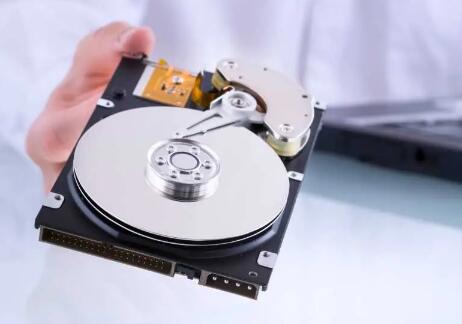A corrupted hard drive can be a nightmare, especially if it contains important files, cherished memories, or critical work-related documents. The thought of losing years’ worth of data can be overwhelming, but don’t despair just yet.
Hard drive corruption occurs when the file system structure or the physical components of the drive become damaged, making data inaccessible. Some common causes of corruption include:

Power failures: Sudden shutdowns can interrupt read/write operations, causing file corruption.
Bad sectors: Over time, sectors on the disk may degrade and become unreadable.
Malware and viruses: Malicious software can infect and damage file system structures.
File system errors: Unexpected crashes and improper ejections can lead to corruption.
Physical damage: Dropping or exposing a hard drive to extreme temperatures can result in hardware failure.
Step 1: Assess the Situation
Before attempting any recovery methods, it’s essential to determine the severity of the corruption.
Does the drive show up in File Explorer? If yes, it might be a minor file system issue.
Can the drive be accessed in Disk Management? If so, it might require a partition repair.
Do you hear clicking noises? Unusual noises suggest physical damage, requiring professional recovery.
Step 2: Use Built-in Windows/Mac Tools
CHKDSK (Windows)
CHKDSK (Check Disk) is a built-in utility that scans and fixes logical errors on a hard drive.
Open Command Prompt as an administrator.
Type the following command:
chkdsk X: /f /r
(Replace X with the letter of your corrupted drive.)
Press Enter and let the scan complete.
First Aid (Mac)
On macOS, the Disk Utility First Aid tool can repair minor drive corruption issues.
Open Disk Utility from Applications > Utilities.
Select the corrupted drive and click First Aid.
Allow the tool to scan and repair detected errors.
Step 3: Recover Data Using Data Recovery Software
Panda Assistant is a powerful data recovery tool designed to help users retrieve lost or corrupted files from hard drives, including HDDs that have suffered damage, formatting issues, or logical failures. Whether your hard drive has become inaccessible due to file system corruption, bad sectors, accidental deletion, or malware attacks, Panda Assistant provides an efficient solution to recover critical data.
With its advanced scanning technology, Panda Assistant can locate and restore lost files, including documents, photos, videos, and system data, from corrupted HDDs. The software offers both quick and deep scan options, ensuring maximum file recovery based on the severity of the corruption. Its intuitive interface makes it easy for users of all skill levels to navigate the recovery process.
Step 4: Attempt Data Extraction via Safe Mode
Sometimes, booting into Safe Mode can allow access to a corrupted drive by preventing unnecessary background processes from interfering.
Restart your computer and press F8 (Windows) or hold Shift while booting (Mac).
Choose Safe Mode with Command Prompt.
Try copying important files to an external drive.
Step 5: Use Linux Live CD for Recovery
If Windows or macOS cannot read the drive, Linux can sometimes access corrupted partitions.
Download a Linux distribution (e.g., Ubuntu) and create a bootable USB drive.
Boot from the USB and select Try Ubuntu.
Open Files and check if the corrupted drive is accessible.
Transfer data to another storage device.
Step 6: Recover Data from an External Enclosure
If the internal hard drive is corrupt but not physically damaged, using an external enclosure or USB-to-SATA adapter can help.
Remove the hard drive from the computer.
Place it in an external enclosure.
Connect it to another computer via USB and attempt data recovery.
Step 7: Professional Data Recovery Services
If all software-based methods fail, professional data recovery services may be the last resort. These services use specialized tools to recover data from physically damaged or severely corrupted hard drives. Companies such as DriveSavers, Ontrack, and Gillware provide expert-level recovery but can be expensive.
Preventing Future Hard Drive Corruption
Regular Backups: Use cloud storage or external drives to keep a backup of important files.
Use a UPS: A Uninterruptible Power Supply (UPS) can prevent power surges that cause corruption.
Install Antivirus Software: Protect your system from malware and viruses.
Monitor Drive Health: Use tools like CrystalDiskInfo to check for warning signs of drive failure.
Safely Eject Drives: Always use the Eject option before removing external drives.
Recovering data from a corrupted HDD can be a challenging process, but with the right tools and methods, it is often possible. Start with built-in utilities, try data recovery software, and if necessary, seek professional help. To prevent future data loss, practice regular backups and system maintenance. With proper precautions, you can ensure your data remains safe and accessible for years to come.
About us and this blog
Panda Assistant is built on the latest data recovery algorithms, ensuring that no file is too damaged, too lost, or too corrupted to be recovered.
Request a free quote
We believe that data recovery shouldn’t be a daunting task. That’s why we’ve designed Panda Assistant to be as easy to use as it is powerful. With a few clicks, you can initiate a scan, preview recoverable files, and restore your data all within a matter of minutes.










